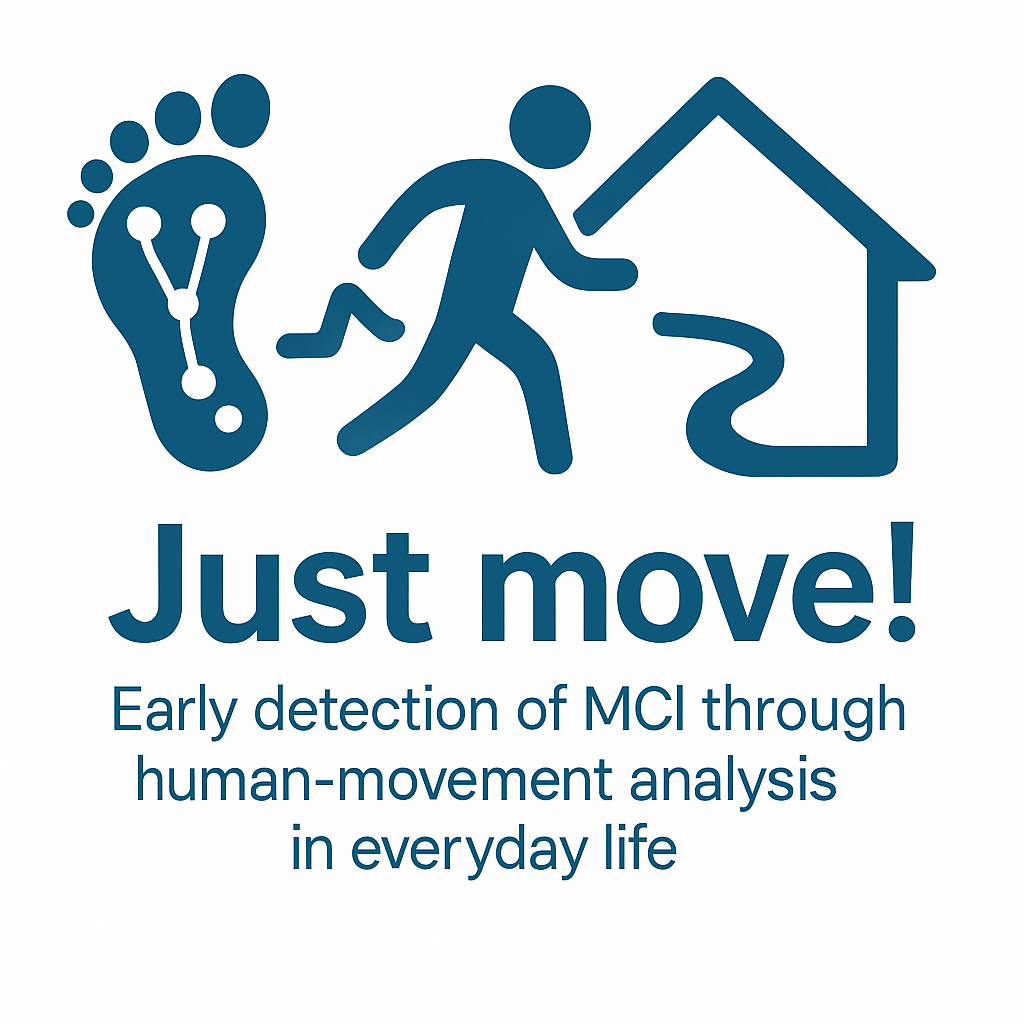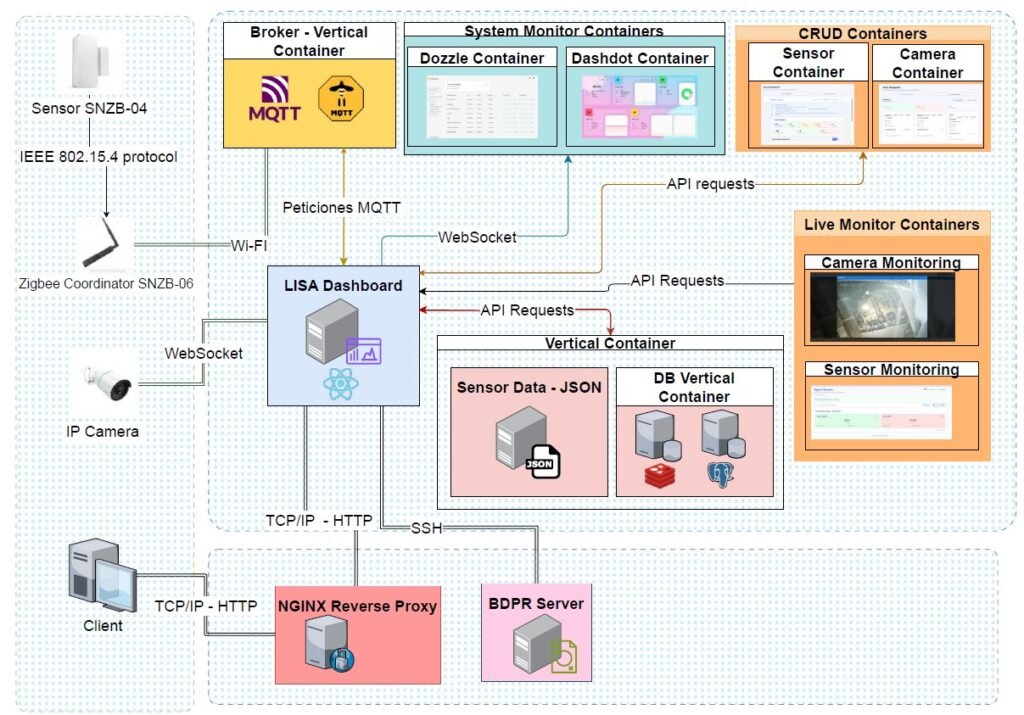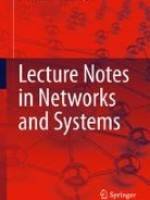
2023 - 2026
Ref. PID2022-142388OA-100
Just Move!: Early detection of MCI through human-movement analysis in everyday life
This project aims to develop a valuable tool to support the early detection of signs of Mild Cognitive Impairment (MCI) by monitoring human motion and human daily life activities and identifying anomalies in their execution. To achieve this, the project seeks to gather information on underlying motor actions—such as gait, limb movements, balance, and posture—as well as contextual data related to Activities of Daily Living (ADLs). This includes recognizing the objects with which individuals interact during activities and identifying each specific activity and its tasks, all through a minimal and non-intrusive sensing infrastructure.

Overview
Main Objective:
Develop and validate an AI-based platform (LISA) that, with minimal and non-intrusive infrastructure, monitors human motion and Activities of Daily Living (ADLs) performance to enable early detection of MCI signs. Multimodal acquisition will integrate gait, limb movements, balance and posture, together with contextual information about object interactions during ADLs in the kitchen context.
The system will handle data heterogeneity and uncertainty to recognize activities and detect execution anomalies as digital biomarkers of cognitive decline. Target anomalies include apraxias, freezing episodes, memory deficits or errors in tool/utensils selection/use that trigger alerts for early clinical follow-up. The project will progressively minimize instrumentation (video sources, wearables or body-worn and ambient sensors) down to lean configurations with comparable performance. This will enable sustainable in-home deployments that support daily living and improve users’ quality of life.
Work Packages
Coordination, Management, Dissemination
Transversal aspects of the project. Ethical and privacy implications.
Development, deployment and testing of the multi-modal sensory data acquisition framework
Development of a multi-modal sensory data acquisition framework capable of synchronizing and gathering heterogeneous data from multiple sensing sources (wearables, ambient sensing systems and video) in a unobtrusive manner
Data Processing AI-based platform
The Data Processing AI platform is intended to be a useful tool to identify early cognitive impairment signs from the everyday life human motion and ADL performance
Pilot Trials
Explicit lab trials combined with short-term evaluations in controlled environments (instrumentalized occupational housing) and monthly trials in real environments with seniors living alone
Research Team

Dr. Iván González

Dr. Jesús Fontecha
- José Bravo (UCLM, Computing Engineer)
- Ramón Hervás Lucas (UCLM, Computing Engineer)
- Inocente Sánchez Ciudad (UCLM, Telecommunications engineer)
- Tania María Mondéjar Palomares (UCLM, Psychologist)
- Beatriz García Martínez (UCLM, Telecommunications engineer)
- Francisco Javier Navarro Olivera (UCLM, Geriatrician)
- Luis Cabañero Gómez (UCLM, Computing Engineer)
Results
From Images to Video: A Lightweight Approach for Adapting Static Object Recognition Models to Dynamic Sequences
by Yulith V. Altamirano-Flores, Sebastián Toro-Guajardo, Iván González, Irvin Hussein Lopez-Nava, Luis Cabañero y Paulino E. Bermúdez
International Conference on Ubiquitous Computing and Ambient Intelligence, (LNNS Springer) 2025 (waiting for publication 24/11/2025)
Object recognition models trained on static images often perform suboptimally when applied directly to video sequences. This is due to factors such as redundant computations across consecutive frames, lack of temporal consistency in recognition results, and a higher incidence of false positives. In this work, we propose a strategy to adapt these models for more efficient and robust use in dynamic video contexts. Our approach is based on temporal processing techniques that reduce the frequency of full-model inferences by validating object presence through temporal recurrence analysis over short frame windows.
Direct Memory Access-Based Data Storage for Long-Term Acquisition Using Wearables in an Energy-Efficient Manner
by Cosmin C Dobrescu, Iván González, David Carneros-Prado, Jesús Fontecha, Christopher Nugent
Sensor 2024, 24(15), 4982.
This study introduces a lightweight storage system for wearable devices, aiming to optimize energy efficiency in long-term and continuous monitoring applications. Utilizing Direct Memory Access and the Serial Peripheral Interface protocol, the system ensures efficient data transfer, significantly reduces energy consumption, and enhances the device autonomy. Data organization into Time Block Data (TBD) units, rather than files, significantly diminishes control overhead, facilitating the streamlined management of periodic data recordings in wearable devices. A comparative analysis revealed marked improvements in energy efficiency and write speed over existing file systems, validating the proposed system as an effective solution for boosting wearable device performance in health monitoring and various long-term data acquisition scenarios.
Segmented and tagged videos and human kinematics data from synchronized sources/cameras while performing Activities of Daily Living in a home environment
by MAmI Research Lab
This dataset contains segmented videos of Activities of Daily Living (ADL) performed in a functional kitchen (occupational housing). The data has been processed using MediaPipe and YOLOv8, and skeletal pose data is included for each video. It features 16 different subjects performing a range of daily activities, each recorded from multiple camera angles.
MultiPosture: A Dataset of body joints keypoints extracted using MediaPipe for multi-task sitting posture recognition with upper and lower body labels
by MAmI Research Lab
This dataset contains skeletal pose data extracted from video recordings of 13 participants performing various sitting postures in home environments. The data was processed using MediaPipe Pose Heavy model and includes 4,800 frames of 3D skeletal coordinates (x, y, z) for 11 key body joints, with each frame manually labeled for both upper and lower body posture classifications.
Related contribution where the dataset is used:
LISA Open Source AI-based platform for acquiring multimodal data in living labs and home envirnoments
by Yulith V. Altamirano-Flores, Paulino E. Bermúdez, Iván González and Luis Cabañero
Github repository accesible at: https://github.com/yulithalta/lisa-research-platform
Further documentation is accesible at: https://github.com/yulithalta/lisa-research-platform/tree/main/doc
LISA is an open-source system for time-aligned acquisition of IP video streams and Zigbee / MQTT-based sensor data in both, controlled research environments (living labs) and home environments.
It enables reproducible session workflows, structured metadata, data curation and export of synchronized datasets for further analysis.
Automation of observational gait assessment through an optical 3D motion system and Transformers
by David Carneros-Prado, Sergio González-Velázquez, Cosmin C. Dobrescu, Iván González, Jesús Fontecha and Ramón Hervás
Applied Intelligence (Springer Nature), January 2025. Vol.55, 250 (2025). DOI: 10.1007/s10489-024-06163-w
Assessment of human gait is a useful diagnostic tool for identifying musculoskeletal abnormalities and disorders. Most clinicians use qualitative approaches based on visual observations to analyze gait, leading to repetitive exercises that require subjective evaluation. This study proposes a system to automate and objectify traditional observational gait tests using a transformer encoder network that analyzes data captured with a 3D optical motion system.
A Comparison Between Multilayer Perceptrons and Kolmogorov-Arnold Networks for Multi-Task Classification in Sitting Posture Recognition
by David Carneros-Prado, Luis Cabañero-Gómez, Esperanza Johnson, Iván González, Jesús Fontecha and Ramón Hervás
IEEE Access, December 2024. Vol.12, pp.180198-180209 (2024). DOI: 10.1109/ACCESS.2024.3510034
Prolonged incorrect sitting postures can lead to various health issues, including musculoskeletal disorders and reduced quality of life. Efficient and accurate methods for monitoring and assessing sitting postures are crucial for promoting overall well-being in our increasingly sedentary society. This study compares the performance of Kolmogorov-Arnold Networks (KANs) and Multilayer Perceptrons (MLPs) in sitting posture recognition, utilizing a multi-task classification approach to simultaneously identify upper and lower body positions.












